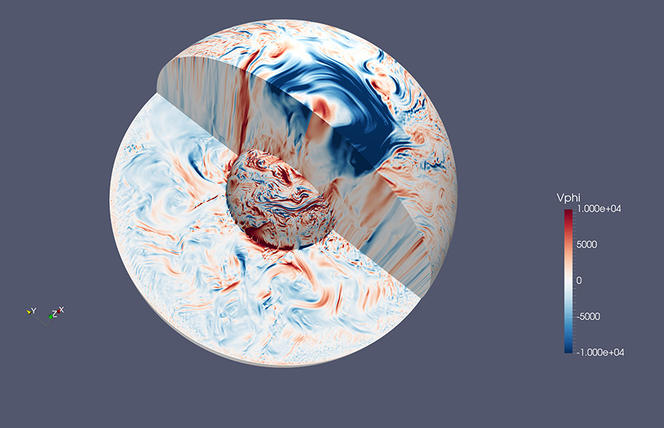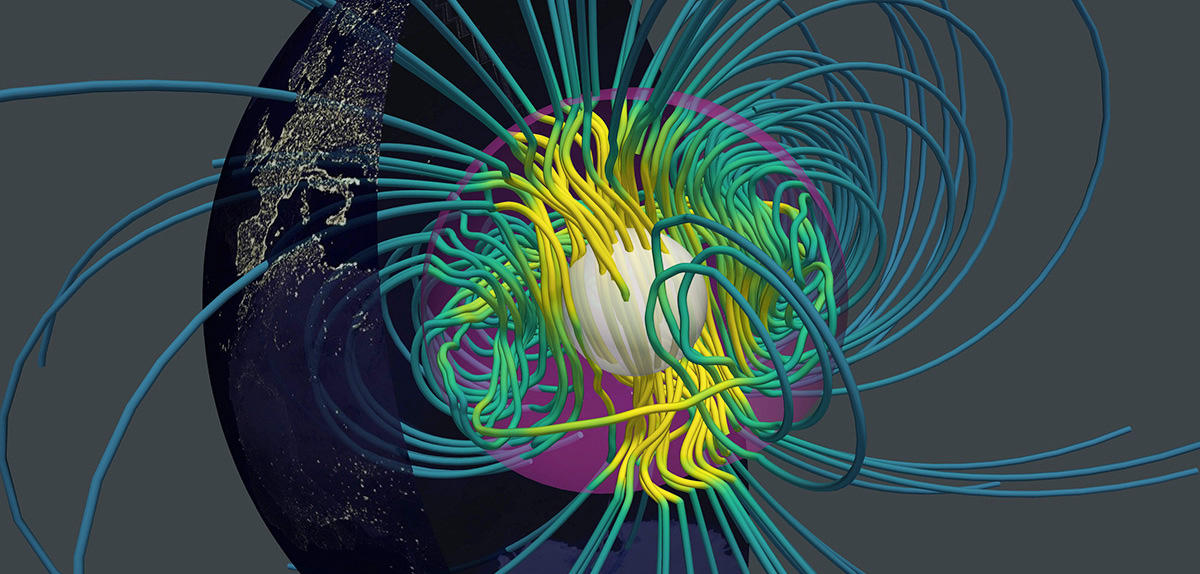High-Definition Simulation
A spectacular innovative high-definition simulation has been exposed that tends to look into the stormy core of the Earth, providing new insight on the mechanisms which seems to drive its magnetic field. Though this field is said to stretch way beyond our planet, as a means of protective barrier against the harmful solar emissions, it originated from deep within at almost 2,000 miles below the surface.
The later supercomputer simulation portrays the flow of liquid metals in the outer core of the Earth wherein the temperature as well as the pressure tends to vary giving rise to electric currents. With the combination of the rotation of the Earth, it is said to produce a large-scale `dynamo effect’.
According to the French National Centre for Scientific Research, in the case of dynamo effect, the Earth tends to spin along its axis and lines up with the convective motions in the outer core thus resulting in the massive magnetic field which is said to extend spaceward. Nathanael Schaeffer, lead author had explained that while the procedure is said to be a complex task to be replicated in the lab, usual computer simulations seems to be frequently unreliable thereby compelling the scientists to settle for rough calculations.

Simulation: New Awareness on Outer Core
The researchers from the Institut des Sciences de la Terre and Institut de Physique du Globe de Paris had turned to the OCCIGEN supercomputer in Montpellier, in order to get a proper insight of what really tends to go in the outer core. Schaeffer had stated that their simulation had utilised up to 16,000 interlinked computer processor which had at the same time shared the mass of calculations.
The same took a little less than a year to calculate what otherwise would have taken 250 years by an individual computer. The hard work provided new awareness on the outer core comprising of methods which the scientist suspected were at play though were incapable of spotting in their earlier simulations.
This consists of the westward drift of the magnetic field. Moreover they also discovered some evidence of the `giant tornadoes’ that had been connected to the strong magnetism towards the poles which had extended downward all through the core.
Build-up of Light Material – Tangent Cylinder
The authors had mentioned in the study, published that towards the interior, the magnetic field was said to be the strongest and associated with a vigorous twisted polar vortex, whose dynamics could occasionally lead to the formation of a reverse polar flux patch towards the surface of the shell.
Besides that, the tough magnetic field also endorsed a build-up of light material in the tangent cylinder which led to steady stratification there for simulation. The researchers had explained that the new simulation provides a better realistic view of what tends to go on in the outer core of the Earth and hence the magnetic field. This could enable better magnetic field readings as well as forecasts, to support space navigation together with other resolutions.
The simulation, according to Shaeffer show `zones where the magnetic field is said to be mainly strong as expected already, but more unexpectedly, the simulations show other zones where the field has been nearly insignificant.







